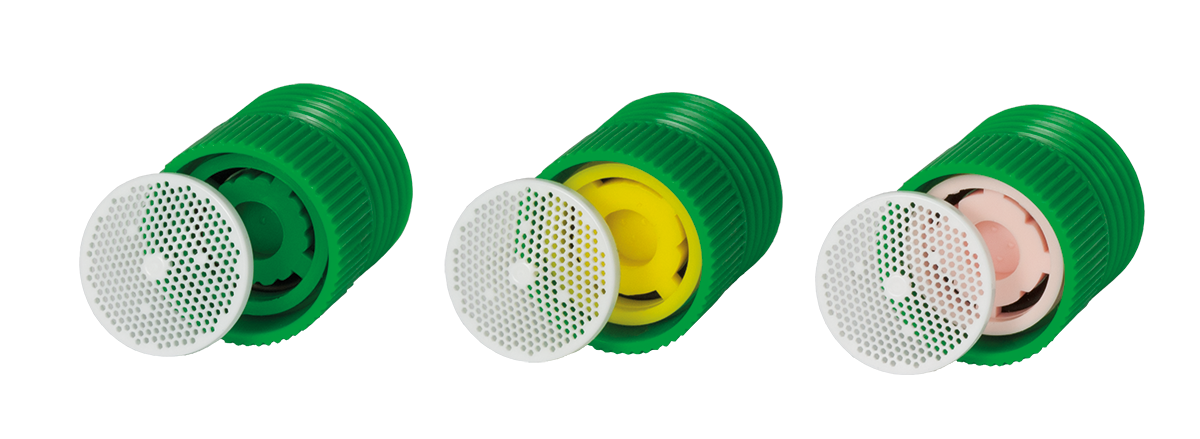Effective drinking water management contributes to a good basis for a healthy pig. Unfortunately, this is often overlooked or not even considered important.
At birth, a piglet's body weight consists of 82% water. By the time the pig reaches a slaughter weight of 100 kg, this still is 51%. This shows how important water is for a pig to grow.
During the first week of life, a piglet mainly drinks milk from the sow. But soon after the first week, the piglet starts drinking water. It is often the case that piglets are given still and warm water. Water temperatures above 20°C (68°F) can be a source of bacterial infections such as MRSA. It is therefore very important that you thoroughly clean and disinfect the water supply before use.
Research has shown that the feed intake of piglets increases if they start drinking water at an early age. In general, growing pigs drink three times more water than they eat dry food. Depending on the climate and environmental conditions, a farrowing sow drinks at least 20 liters of water per day.
If your sow shows any of the following symptoms, there's a good chance she's not drinking enough:
When choosing a drinking system, it is important to look at the environment, the housing system, feed and body weight, and the climate. Drinking water must be fresh and clean to ensure good absorption, especially in a warmer climate. In addition, it is important to install sufficient drinking points in each pen. Some pigs are constantly intimidated by pen mates, and as a result, they cannot or dare not touch the drinking nipple. That is why we recommend installing at least two drinking points in a pen.
There is a huge range of different drinking nipples to be found. Bite nipples, wet feeding nipples, and spray nipples are most commonly used as drinking nipples for pigs. Wet feeding nipples and spray nipples are installed in drinking bowls, while bite nipples are mounted on the wall.

The height and positioning of the drinking nipples depend on the type of drinking nipple, type of housing unit, and the size of the pigs. For the smallest pig, the nipple drinkers are generally mounted 5 centimeters above shoulder height. In practice, however, it is not feasible to measure all pigs and to continuously adjust the height of the drinking nipples. Therefore, bite nipples are mounted on the wall at a certain height. In some housing units, the drinking nipples are mounted at different heights to ensure that each pig has easy access to the nipple drinkers.
Note that the drinking nipples shouldn't be mounted in the corner of the pen. Pigs always drop their manure close to the wall. They feel safer there. The combination of the spilled water from the nipples and the manure increases ammonia build-up. The ideal place to mount a drinking nipple is near the food.
If you are installing multiple drinking nipples, make sure they are placed close to each other. If you put them far apart, there is a chance that one will be overlooked and rarely used. It then becomes dirty and unsanitary, which in turn can cause health problems.
The first drinking nipple in the housing unit may have a higher water flow than the last. This makes it more challenging to provide each pig with enough water. Besides, when administering medicines, it can also lead to some pigs ingesting far too much of the solution and other pigs in another pen too little. Mounting an automatic orifice on the drinking nipples is a great solution to prevent this. These orifices guarantee an optimal and constant water delivery from the first to the last drinking nipple in the house, regardless of water pressure.

Research shows that pigs have a fixed drinking pattern:
We advise you to keep an eye on the water consumption during peak hours and temporarily adjust the water output if necessary. You can also do this by using an automatic orifice.
Optimal drinking water management contributes to better production results and healthy pigs. Irregular water quality testing, not enough drinking water points, and too low or too high a water flow are the things that most often go wrong or are overlooked.



 Wasserqualität & Hygiene
Wasserqualität & Hygiene  Tränkesysteme
Tränkesysteme  Tränkewasserlösungen Schweine
Tränkewasserlösungen Schweine 